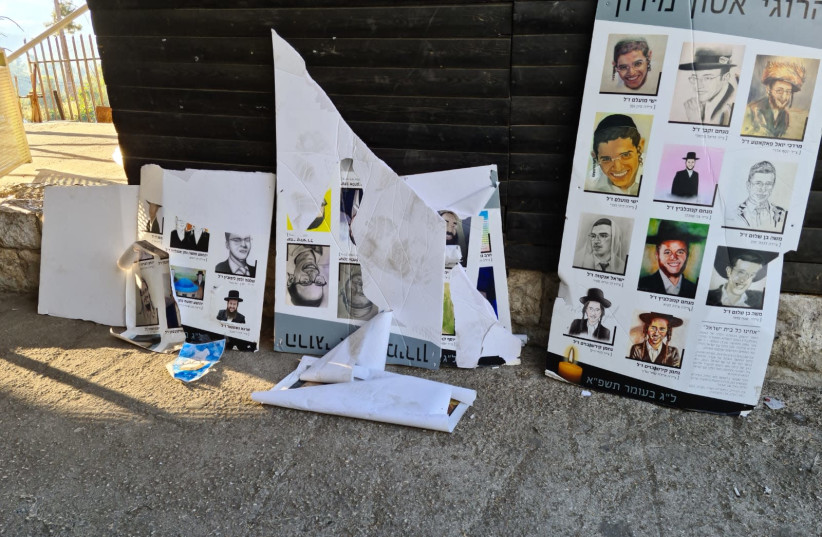Mount Meron disaster tragic, but also a cautionary tale
A state commission of inquiry filed a report on the Mount Meron disaster to the government on Wednesday, revealing that Prime Minister Benjamin Netanyahu, Israel Police commanders, and local officials were responsible for the crowd crush that had taken the lives of 45 people.
For those who do not remember, the tragic incident occurred on Lag Ba’omer 2021, during which, at the bonfire lighting event on Mount Meron, an excessively large crowd attempted to access a narrow, slippery stairway, resulting in a stampede that led to the suffocation of numerous victims.
A committee assigned personal responsibility to 16 officials out of the 18 reviewed, stressing the judgment’s ethical – not legal – nature. The committee criticized eleven organizations, including the Israel Police and various government bodies, for their roles in the incident.
Netanyahu was personally held accountable. The Prime Minister’s Office was criticized for a lack of leadership during inter-ministerial disputes, leading to a recommendation to prioritize issues involving human life in the future.
Then-interior minister Amir Ohana and Police Chief Kobi Shabtai were also held responsible. The police faced criticism for insufficient preparation, lax law enforcement, and issuing event licenses without proper security reviews.

Police officers were not adequately briefed on plans for dealing with congestion, either, and communication was lacking between the various official bodies there to prevent havoc – the havoc that ultimately occurred that awful night.
The report, according to the Jerusalem Post’s Jewish World Correspondent Michael Starr, detailed how negligence, lack of preparation, absent governance, no enforcement of construction law, and conflict over responsibilities, authority, and land ownership by politicians, civil servants, and law enforcement led to dangerous overcrowding and hazardous and illegal facility conditions year after year during the pilgrimage to the tomb of Rabbi Shimon Bar Yochai for the Lag Ba’omer holiday.
A recommendation was made to fire National Center for the Development of Holy Sites director Rabbi Yosef Schweinger and he voluntarily resigned following the release of the report.
Before the holiday bonfire, the center had ignored police demands to make infrastructure changes and allow for pre-event engineering inspections, and they had clashed on the subject of appointing an event manager. You did not misread: No official body was responsible for the event.
Ultimately, the bottom line was this: Israel could have prevented the Mount Meron disaster.
The fingers are pointed every which way now, bouncing between Netanyahu and the police, between police and the center, the center and Netanyahu. However, the government must recognize, as the governing body that can oversee the policy-making for such events, that the Meron disaster and the commission of inquiry conclude that policies need to be put in place to protect human lives at holy sites on holidays.
History of overcrowding at religious sites
Overcrowding at religious sites is not new, and the warning signs were all there. For example, Arieh Amit, a former senior police official, told Maariv, the sister publication of the Post, that he remembered one Ramadan in which “there were 200,000 worshipers on the Temple Mount, and there was no special safety issue with that.
“If we even increase the number of visitors – what will happen is that the very crowded alleyways of the Old City, where there is a very high danger of overcrowding, will be filled with worshipers, by the way, angry that they are not allowed to ascend to the Mount, and this will be a much greater danger than if they allow everyone who wants to ascend and pray,” he said.
At the Western Wall, as well, there are constant concerns ahead of holidays regarding potential overcrowding. This past Rosh Hashanah, the Jewish New Year, the Western Wall Heritage Foundation had ushers at the ready to direct and assist. Still, the infrastructure simply is not there to withstand the exorbitant number of visitors often present.
The government cannot turn a blind eye to this and let independent organizations managing holy sites continue disparaging safety concerns. The proper resources must be allocated to limit the danger to crowds in areas both sacred and without proper infrastructure.
The Meron disaster was a terrible tragedy, but it is also a cautionary tale. Israel – especially its government – must learn from its mistakes; otherwise, the next disaster may be just as tragic or worse.





Comments are closed.